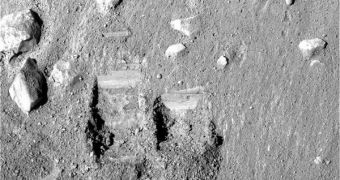For years, the American space agency has been operating the Mars Scout program, which is an array of missions destined to reach the Red Planet, and study it, at low costs. Each Scout project was to cost less than $485 million, which is a very low price tag for a spacecraft destined to reach another planet. But experts at NASA decided to call quits on the initiatives, after only two missions were planned. The Phoenix Mars Lander, launched in 2007, was one of them; the other is the MAVEN orbiter, which is scheduled to enter its designated Martian orbit in 2013.
One of the reasons the American space agency gives for discontinuing the Scout initiative is the fact that future missions to our neighboring planet will target its surface. Generally speaking, creating a rover or a lander is significantly more expensive that producing an orbiter. NASA experts say that creating spacecrafts that observe Mars from high above is an objective far easier to attain that designing atmospheric reentry systems, parachutes, thrusters and cushioning devices for landers. Additionally, this category of spacecraft cannot fit within the designated price tag for a Scout mission.
The thing is that NASA wants to focus more on surface studies. At this point, it operated the Mars Odyssey and the Mars Reconnaissance Orbiter (MRO) spacecrafts in the planet's orbit, and the two Mars Exploration Rovers (MER) on the surface. The array of scientific instruments will soon be expanded by MAVEN, and the Mars Science Laboratory (MSL) Curiosity, which is to launch in 2011. “We're in a phase where surface science is becoming more and more the driving factor at Mars,” explained in an interview on July 14 the chief Mars program official at NASA, Doug McCuistion.
He said at the time that the space agency was opening a new slot for a possible mission to the Red Planet through its Discovery program. Regardless of which proposal is selected as part of this initiative, the spacecraft will fly to Mars sometime between 2015 and 2017. Applications for the 12th Discovery mission are accepted until September 3, after which time NASA experts will begin analyzing the proposals. “I really don't know how Mars will fare in the Discovery program, but there certainly are a lot of non-Mars concepts. I think if the Mars concepts have the highest science value then they will be very seriously considered, especially since there is currently no other way to get small mission concepts flown to Mars,” Christensen told Spaceflight Now.

 14 DAY TRIAL //
14 DAY TRIAL //